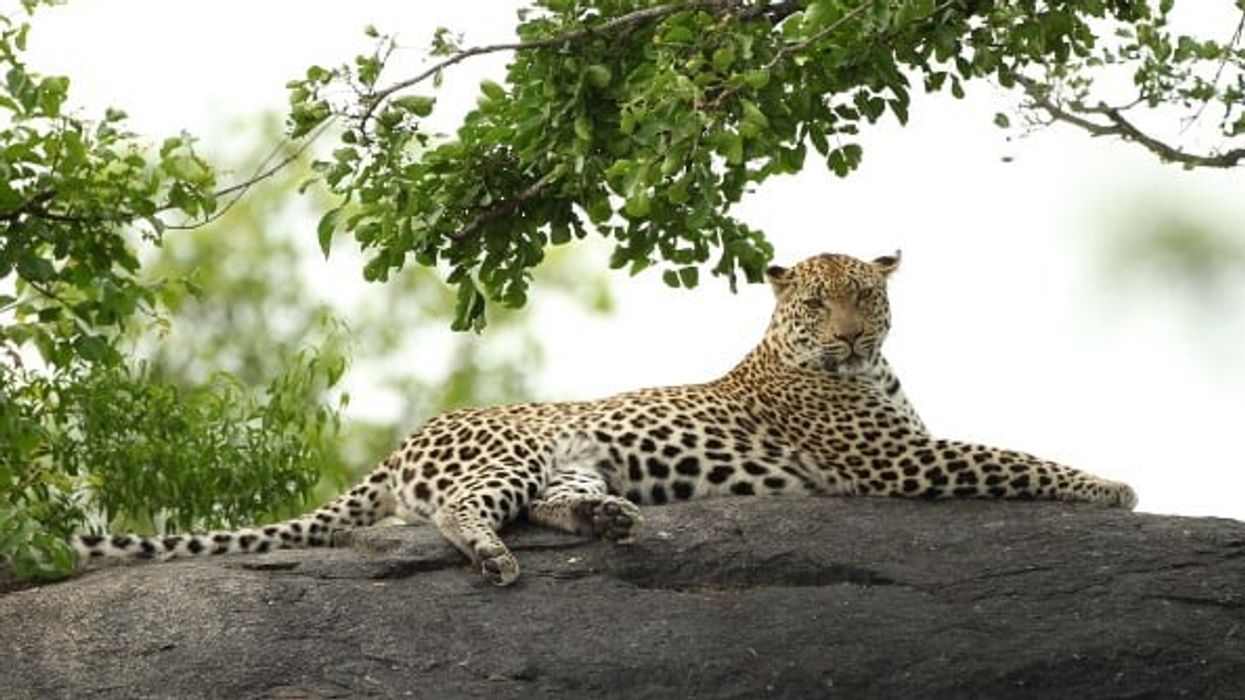By Amit Roy
INDIA is today largely a modern country, but there are still some mysteries left. One such is revealed in travel writer Sundeep Bhutoria’s new book, The Bera Bond.
Bera is a small semi-arid area nestling in the Aravalli Hills in Rajasthan, where people from the Rabari tribe live in perfect harmony with leopards.
Bhutoria says: “The Bera Zone is divided into 10 mountain ranges. The area is known to have had no leopard-human conflict in decades, even though humans and big cats live in close proximity to each other. If a leopard kills livestock, the Rabaris do not seek revenge. The leopards also play their part by never attacking humans.”
He adds: “The Bera region comprises granite hills covered with axelewood and along the dry, rocky riverbeds are the religious shrines and temples. The leopards of Bera have accepted these as a part of their habitat. It’s a most incredible sight to see villagers at prayer and leopards sitting close by, calmly, watching the ceremonies.”
The holiest of the shrines is the Shiva Temple on the Perwa hill, “known for being the place where man and beast can revel together in its sanctity”.
Bhutoria tells of one priest, Maharaj Amar Nath, who came to Perwa in 2001 from Haryana. “It is in this temple, along with the leopards, that he found comfort. Neither did he feel threatened by the leopards nor the leopards by him.”
The book’s introduction has been written by actor Victor Banerjee (who played Dr Aziz in David Lean’s A Passage to India in 1984), who comments: “The Rabari tribesmen, who staunchly believe they are the direct descendants of Lord Shiva, live amongst these leopards as their guardians.”
And in the foreword, Bittu Sahgal, an environmental activist who set up the Sanctuary Asia Foundation, observes: “There was a time when hunters considered that the only good leopard was a dead leopard. In many parts of India, that is still the ground truth, particularly, if the big cats take to livestock predation, or worse. Bera….is an exception.”
Just how unusual Bera is can be judged by even a cursory glance through Indian newspapers. Loss of habitat has meant increasing conflict between human beings and leopards, even in urban and semi-urban settings. For example, leopards are no longer a rare sight in parts of Mumbai adjoining the Sanjay Gandhi National park.
According to one report, there are “not only leopard attacks on the odd pig or cattle calf – leopards here sometimes kill people. Leopard attacks on people peaked at 25 cases in 2002. Mumbai’s leopards live alongside people, mostly in informal settlements, and they hunt and kill dogs in and around their villages. On average, dogs make up about 40 per cent of a Mumbai leopard’s diet.”
Bhutoria was befriended by local wildlife conservationist and photographer Shatrunjay Pratap Singh, who has often been forced to go to court “to prevent this small parcel of paradise from being mined for limestone, marble and more”.
“Shatrunjay told me how once the Maharaj had mentioned to him that he leaves buckets of water and milk for the leopards to lap up. Sadly, Maharaj Amar Nath left for his heavenly abode on August 5, 2016.”
The author also points out “the area in and around this temple is one of the favourite places for the leopards of Bera” and concludes: “In this confluence of the divine and the wild, the human beings have carved out a peaceful place for themselves.”
Bhutoria explains: “I have always had a fascination for big cats and after writing The Safari, my book on tigers, I was on the prowl for the subject of my next publication. Bera piqued my interest and I launched my research.
“Had it not been for the leopards, this tiny village deep inside Rajasthan would have remained hidden from human eyes. Bera, 140km from Udaipur, is home to 55 leopards who live harmoniously with humans. There are few instances of such peaceful co-existence in the world.
“Fringed by the Aravalli hills, the landscape of Bera is exactly as one images arid Rajasthan to be – dotted with cactus and acacia. A closer look at the forested hills, however, will reveal dark, hollow caves perfect for leopards.
“The river Jawai, which flows alongside Bera, is the perfect foil to this desert land. With the Jawai Dam creating a beautiful waterbody, the rivers become the hangout of some of the biggest crocodiles one will see, as well as flamingos, Sarus Cranes, Bar-headed Geese, Ruddy Shelduck and many other birds and animals.”
He says of local tribe: “The Rabaris are a nomadic pastoral community whose primary livelihood is farming and herding cattle. One of the main reasons why the leopards have settled here is because of the availability of the food they love.”
The casual visitor may find it difficult to distinguish one leopard from another. Also, “the rocks of Bera merge so beautifully with the spots when they are resting that it’s difficult to identify them from a distance, even through a pair of binoculars.”
Bhutoria says: “Every leopard has rosette patterns which come in a variety of shapes, sizes and patterns and for people who know about them, the leopards can be identified easily.”
His guide identified the leopards, among them Zia, with her cubs, Deva, Prano and Shiva. There was also Pasha, Charger, Cutear, Chacha Khan, Leo, Marshal, Tara, Rambo, Shedwood and Yasheshwi.
Jiva and Chhotu were spotted with their cubs, Yuvraj, Sultan and Madhu.
He learnt that a male leopard will sometimes kill the cubs of a female he wants to mate with. He discovered that Neelam, who had three cubs, put up a valiant fight against Heera, a male from another territory. “Somehow, Neelam managed to save her cubs in this fight, but the next morning Shatrunjay got the sad news that despite Neelam’s bravery, the male leopard had managed to kill one of her cubs.”
The villagers asked Bhutoria to name one cub – he called it “Gullu”.
The Bera Bond by Sundeep Bhutoria is published by Macmillan.












